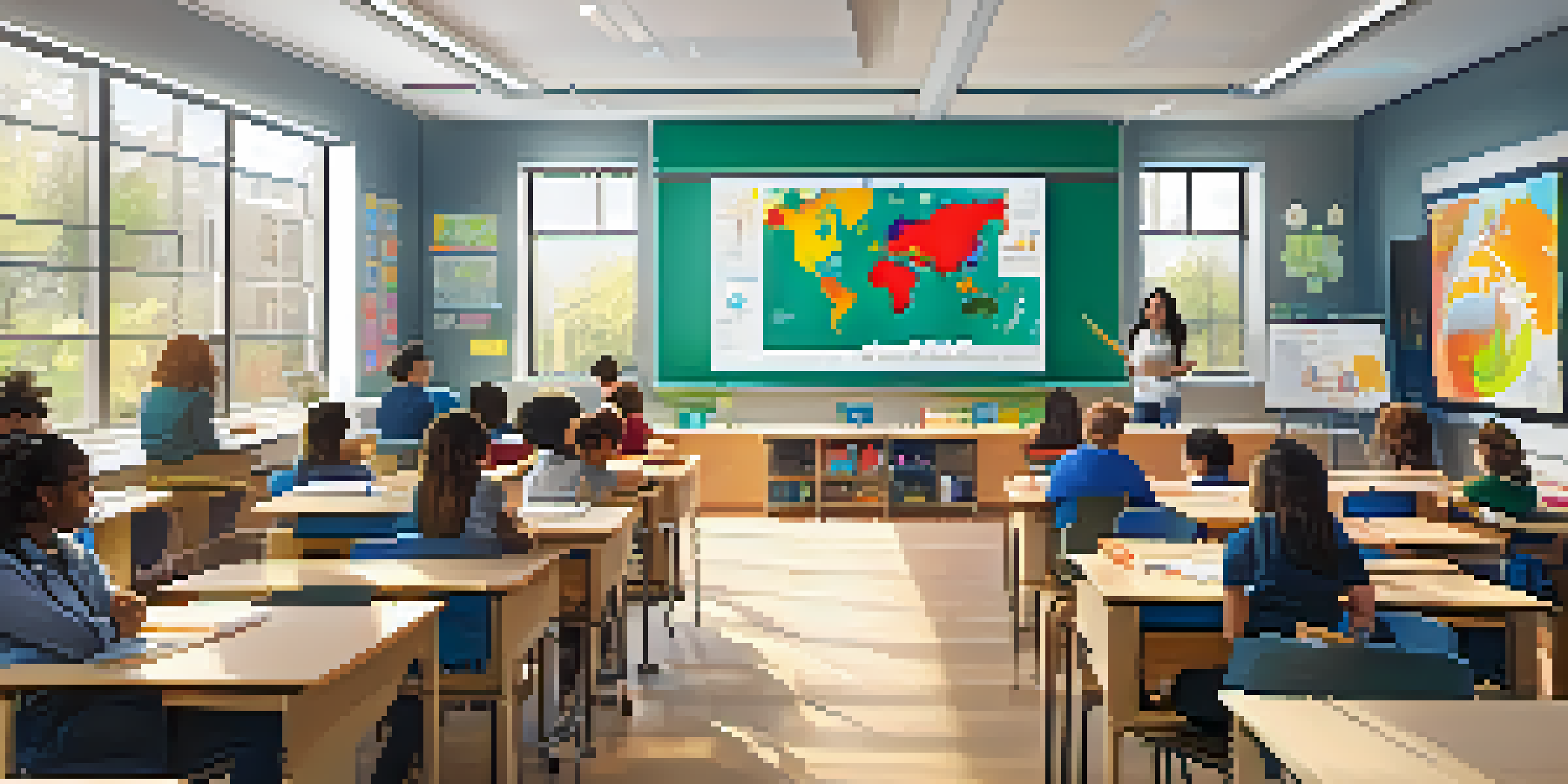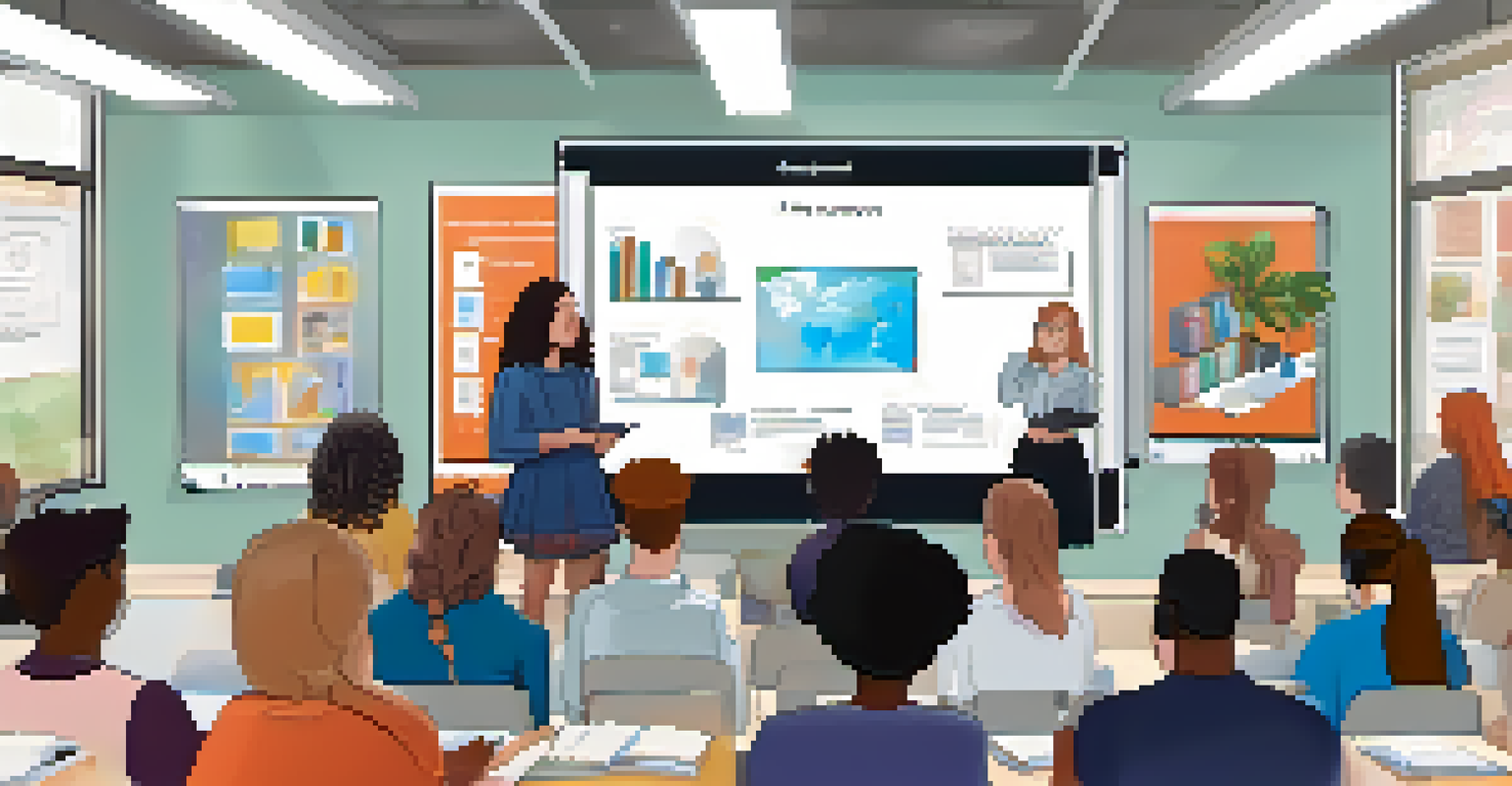The Evolving Role of Educators in Digital Learning Environments

Understanding the Shift to Digital Learning Platforms
The move to digital learning has transformed how education is delivered, making it more accessible to a broader audience. Educators must now navigate online platforms, which can feel like learning a new language. This shift requires them to be tech-savvy and adaptable, blending traditional teaching methods with new digital tools.
Technology is best when it brings people together.
As classrooms turn virtual, the dynamics of teacher-student interactions change. Educators are no longer just knowledge dispensers; they become facilitators of learning experiences. This evolution encourages them to foster a more collaborative environment, where students take an active role in their education.
However, the transition isn't without challenges. Many educators face a steep learning curve when it comes to mastering digital tools and platforms. Despite this, their commitment to student success drives them to embrace these changes, ensuring that learning continues in this new landscape.
The Importance of Digital Literacy for Educators
Digital literacy has emerged as an essential skill for educators in today’s technology-driven world. Understanding how to effectively use digital tools not only enhances teaching but also models important skills for students. Educators who are digitally literate can create engaging lessons that resonate with tech-savvy learners.

Moreover, digital literacy allows educators to better assess student performance through various online assessment tools. This data-driven approach provides insights into individual learning styles, helping educators tailor their teaching strategies. By embracing digital literacy, educators can significantly impact student engagement and outcomes.
Digital Literacy Enhances Teaching
Educators' digital literacy enables them to create engaging lessons and effectively assess student performance.
As educators become more proficient in digital literacy, they also empower their students to navigate online spaces responsibly. This includes teaching students about online safety, ethical behavior, and critical thinking skills, which are vital in today’s information-rich environment. Ultimately, fostering digital literacy cultivates a generation of informed and responsible digital citizens.
Facilitating Student-Centered Learning in a Digital Age
In a digital learning environment, the focus shifts from teacher-led instruction to student-centered learning. Educators are tasked with creating interactive and personalized learning experiences that cater to the diverse needs of their students. This approach encourages autonomy, critical thinking, and collaboration among learners.
The future of education is not about technology; it’s about how we can use technology to enhance the learning experience.
By leveraging technology, educators can implement various teaching strategies that promote active learning. For example, using discussion forums or collaborative projects allows students to engage with the material and with each other. This not only enhances understanding but also builds essential social skills.
Furthermore, student-centered learning enables educators to provide timely feedback and support. With the help of digital tools, teachers can track student progress in real-time, facilitating interventions as needed. This responsiveness fosters a supportive learning environment, vital for student success.
Building Community and Connection Online
One of the challenges of digital learning is maintaining a sense of community among students and educators. Virtual classrooms can feel isolating, making it essential for educators to foster connections. They can achieve this by creating opportunities for social interaction through breakout rooms, group projects, and online discussions.
Moreover, building a community requires educators to be approachable and available for their students. Regular check-ins, virtual office hours, and open communication channels help students feel supported and engaged. When educators prioritize connection, they create a more inclusive and collaborative learning atmosphere.
Student-Centered Learning is Key
Shifting to student-centered learning fosters autonomy and critical thinking, creating personalized experiences for diverse learners.
Additionally, educators can encourage peer-to-peer interaction to strengthen community bonds. By facilitating group activities and discussions, students can share their insights and experiences, enriching the learning process. This sense of belonging is critical for motivation and overall student well-being in a digital environment.
Adapting Assessment Strategies for Digital Learning
Assessment in a digital learning environment presents unique challenges and opportunities. Traditional methods may not fully capture student learning, prompting educators to innovate their approach. This includes using formative assessments, quizzes, and digital portfolios to gauge student progress effectively.
Digital tools enable educators to create diverse assessment formats that cater to various learning styles. For instance, incorporating multimedia presentations or interactive quizzes can make assessments more engaging and less intimidating for students. By diversifying assessment strategies, educators can provide a more comprehensive view of student understanding.
Moreover, timely feedback is crucial in a digital setting. Educators can utilize online platforms to give immediate responses, allowing students to learn from their mistakes right away. This continuous feedback loop helps students stay motivated and focused on their learning goals.
Embracing Lifelong Learning as Educators
As the digital landscape evolves, so must educators. Embracing lifelong learning is essential for teachers to stay current with technological advancements. Professional development opportunities, such as workshops or online courses, empower educators to enhance their skills and adapt to new teaching methods.
Additionally, networking with fellow educators can provide valuable insights and strategies for navigating digital learning environments. Sharing experiences and best practices fosters a culture of continuous improvement within the teaching community. This collaborative spirit not only benefits educators but ultimately enhances student learning experiences.
Community Building in Virtual Classrooms
Maintaining a sense of community is essential in digital learning, achieved through social interactions and accessible communication.
Finally, by modeling a commitment to lifelong learning, educators inspire their students to adopt a similar mindset. Encouraging curiosity and a love for learning in students prepares them for a future where adaptability and resilience are key. This ripple effect reinforces the importance of education in an ever-changing world.
The Future of Educators in Digital Learning Environments
The future of education will undoubtedly continue to embrace technology, shaping the role of educators even further. As new tools and platforms emerge, educators will need to remain flexible and open-minded. This evolution presents an exciting opportunity to redefine teaching and learning in innovative ways.
In this future landscape, educators will likely take on more roles as mentors and coaches, guiding students through personalized learning paths. By focusing on individual strengths and interests, teachers can help students navigate their educational journeys with confidence. This mentorship approach can lead to more meaningful and relevant learning experiences.

Ultimately, the evolving role of educators in digital learning environments reflects a broader shift towards inclusivity and adaptability. As they embrace these changes, educators will continue to play a vital role in shaping the future of education, ensuring that all students have the tools and support they need to succeed.